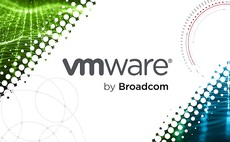The combination of cloud computing and viable open source platforms is providing a welcome alternative for cost-conscious organisations - challenging both the major software vendors and the big services providers
When the Association of Train Operating Companies (ATOC) revealed that Rail Settlement Plan, its wholly owned subsidiary that supplies sophisticated applications to the rail industry, was shifting some core applications to a combination of open source and public cloud, it raised more than a few eyebrows.
It wasn't just the mission-critical nature of the applications that it was rebuilding from the ground up, but the scale of the savings in running costs that it was generating as a result: the new applications were some 70-80 per cent cheaper to run than the old ones.
What is more, instead of going with one of the giants of the services industry, it partnered with a relative minnow instead, Ipswich-based Smart421, owned by Kingston-upon-Hull's idiosyncratic telecoms company KCOM.
That combination of applications built by small and medium-sized services companies, using open source ahead of proprietary software, and running in the cloud is proving particularly potent, says Robin Meehan, chief technology officer of Smart421.
"Open source and cloud just go together completely hand-in-glove. Indeed, it's really accelerated our adoption of MySQL at the database layer," says Meehan. "It's such a natural match with the large volume of Amazon Web Services (AWS) work we are doing."
In contrast, major services companies have a higher cost base and their own data centres to fill. Indeed, says Steve Howes, chief executive of Rail Settlement Plan, it was the small and medium-sized services companies that offered both the most innovative proposals as well as the lowest costs when the project was put out to tender.
Challenging times
Ian Thomas, strategy director at services and systems giant Fujitsu, admits that cloud especially represents a particularly potent challenge to traditional computer services companies such as Fujitsu.
"We definitely recognise the challenges: The IT supply chain is changing and part of that is due to a ‘disaggregation' of the IT supply chain," says Thomas.
He continues: "Previously, you would have some vertically integrated providers - like Fujitsu or IBM - who would be the ‘go to' providers for large organisations." They would typically outsource or partner with one of these organisations, or one of the services elite, such as EDS (now part of HP) or Capgemini, in a wide-ranging deal.
What we will increasingly see, he adds, is cloud commoditising and integrating all of the technologies required to underpin the delivery of IT services. That has also brought new, smaller services companies into the market that can help deliver bespoke software-as-a-service (SaaS) applications, or business processes based on SaaS.
"Then, slowly, you will also see the services ‘part' disaggregating and doing a lot less in terms of big technology management and managed services, and a lot more in terms of consulting and the ‘assortment' of services that make more sense to particular customers or industries," Thomas says.
In other words, the management of many organisations' technology infrastructure will shift from the major outsourcing companies, out of their data centres and into the cloud, while customers will instead demand portfolios of applications and business processes that could be run from different clouds.
This also affects the major software vendors, not just in terms of their customers choosing cloud alternatives instead, but software that is easier to use, manage and pay for in the cloud.
On the one hand, the emphasis will shift from server operating system and database platforms because that will be the responsibility of infrastructure-as-a-service providers. The focus, instead, will be on decisions around particular applications and functionality, and making those applications and services work together.
In many respects, technology platforms will become less relevant to end-customers than applications, and the features, functions and reliability they offer.
On the other hand, software licensing rarely works smoothly in the cloud - especially when the vendor insists on a per-processor licensing model, which, in a public cloud, could run to as many servers and processors as the provider is running.
In truth, says Andrew Brabban, director of application services, international business, at Fujitsu, major companies such as pubs chain Mitchells & Butlers want services companies that can provide a variety of services, including cloud, but also including traditional outsourcing and application development, too.
Mitchells & Butlers, he says, therefore uses a range of services in the five-year IT infrastructure renewal that it is currently undergoing with Fujitsu. That means a combination of both public and private cloud, as well as hosting mission-critical applications and providing disaster recovery infrastructure and services.
If you can't beat them, buy them
Fujitsu responded to the threat of cloud by introducing its own public cloud - established in Japan in 2009, before it was rolled out in the US, UK, Germany, Singapore and Australia - and acquiring a string of cloud-focused start-ups to flesh-out its platform.
In 2008, the company acquired Okere, a specialised consulting company focusing on Salesforce.com implementations in financial services. "We bought Okere to better understand how the [cloud] business model worked," says Brabban.
In 2011, Fujitsu added a marketplace function to its cloud to enable software vendors to port their applications to the cloud, and to make them publicly available in Fujitsu's cloud.
Earlier this year, it also acquired Paris-based RunMyProcess, a start-up focusing on cloud-based workflow applications. "It's a very low cost solution and brought with it a whole set of channel partners," says Brabban.
"We are addressing this shift by building a platform that gives us the ability to deliver integrated IT experiences, which support quick delivery of business solutions; we are building [a network of] channel partners enabling us to take that to market in new ways," adds Brabban.



















